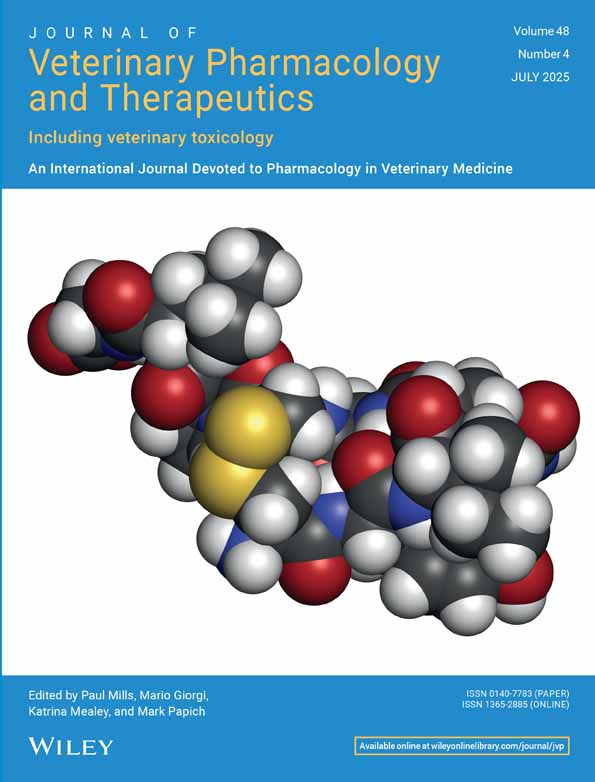Dexamethasone and flumethasone residues in milk of intramuscularly dosed cows
Abstract
A field study was performed to assess the level of drug residues in milk after therapeutic application of highly potent synthetic glucocorticoids. Dexamethasone was tested either as a crystalline suspension or as a combination of sodium phosphate and phenylpropionate esters. Intramuscular injection of these preparations in lactating dairy cows (60 μg dexamethasone/kg body wt) yielded drug residues in milk of up to 8.4 ng/mL 12 h after treatment. These dexamethasone residues fell to below 1.0 ng/mL within 3 days after treatment. Intramuscular injection of an aqueous flumethasone preparation (13.5 μg/kg body wt) produced drug residues in milk in the range of 0.7-1.2 ng/mL 12 h after treatment, whereas flumethasone was below the detection limit of 0.23 ng/mL 2 days after administration. These results indicate that toxicologically significant residues may arise transiently in the milk during the first 2-3 days after intramuscular injection of synthetic glucocorticoids. Urine from the same animals contained 5- to 50-fold higher glucocorticoid concentrations than the corresponding milk samples. Thus, urine analysis appears to be an effective method to monitor the use of synthetic glucocorticoids in food producing animals.




